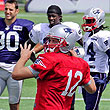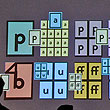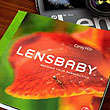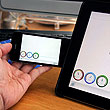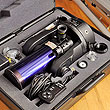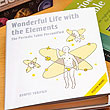Is it really possible to read 3,000 to 5,000 words-a-minute? This question had been at the back of our minds for some time. Four years ago we came across a book by Stanley Frank called Remember Everything You Read: The Evelyn Wood 7-Day Speed Reading and Learning Program. We had heard of the Evelyn Wood program, but knew nothing of its techniques. Intrigued, we decided that the $3.00 investment for this used book seem like a small amount to risk to find out more.
The Evelyn Wood 7-Day Speed Reading and Learning Program. We had heard of the Evelyn Wood program, but knew nothing of its techniques. Intrigued, we decided that the $3.00 investment for this used book seem like a small amount to risk to find out more.

We purchased the book, did a quick read, and then shelved it in the RainyDay library. Fortunately the book was recently rediscovered and this time we read it in its entirety. We not only read it from cover to cover, we also did the exercises and practiced the techniques as recommended.
Almost everyone reads by sounding out the words and going from left to right. This is referred to as "subvocal linear" reading. There is a physical limit to this reading technique and it tops out at around 900 words-per-minute (WPM).

According to Frank, the average reading speed is 250 WPM. We clocked in at 2700 words in 10.55 minutes or 256 WPM. Yes, we are pretty average. Using a few simple tweaks suggested by the book, we were able to raise our reading speed, with no loss in comprehension, to 478 WPM (2,450 words in 5.13 minutes) on the first try. That was astonishing! After a few days of practice, we ramped it up to 700 WPM. With another two weeks of effort, we appeared to have leveled out at 843.75 WPM.

What does this translate to? Reading at 900 WPM, a person could finish a 54,000 word book in about an hour, whereas the typical reader (250 WPM) would require 3.6 hours. That is an amazing improvement just by changing a few simple things.
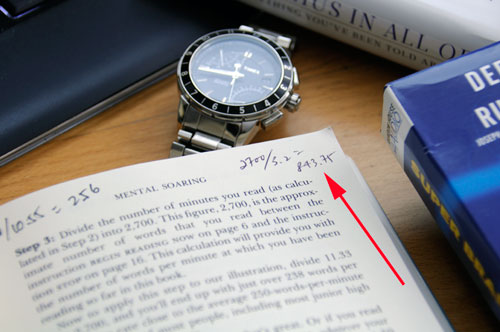
However, we are interested in going faster. In order to do that we need to break through the 900-WPM barrier. And to do that we need to abandon the subvocal-linear techniques and adopt an approach called visual-vertical reading (VVR). This means no longer silently SOUNDING out the words, but relying only on just SEEING the words. Mastering this skill, which we have not come ANYWHERE CLOSE to doing, is the key to the 1,000+ WPM speed often associated with speed-reading.
Visual-vertical reading (VVR) is all about learning how to read by looking at groups of words. The author likens it to recognizing a face without having to individually examining all of its parts. This "chunking" is just one part of the VVR technique. Another is the Multiple Reading Process (MRP).
MRP, or layered-reading, is a way to read that is very different from how we normally read. There are four basic principles to MRP:
- Learn to see and accept words and phrases out of normal order;
- Accept visual rather than audio confirmation when reading;
- Learn to read vertically;
- Understand the overall structure of what is being read.
With MRP things are not read just once but multiple times, with different goals in mind (overview, preview, reading, postview, review). Some might think that this would take longer, but when the overall time spent has been tallied that amount will probably be significantly lower, and with better comprehension. Obviously there is a lot more to MRP than what we have touched upon briefly. We invite interested readers to investigate it for themselves.

The book was originally written and targeted to students, so there are also strategies and techniques for studying, test-taking, and other skills necessary for academic success. It is not that we are not interested, but fortunately for us, we have paid those dues a long time ago. Still, techniques such as mind-mapping will always come in handy no matter where one is on the path of greater knowledge.
Another title which has recently came across our desk is an audio book titled Super Brain by Deepak Chopra and Rudolph Tanzi. Dr. Chopra is trained in internal medicine and endocrinology. Dr. Tanzi is the head of the Alzheimer's Genome Project and a Professor of Neurology at Harvard University. The book looks intriguing and we are eager to listen to it.
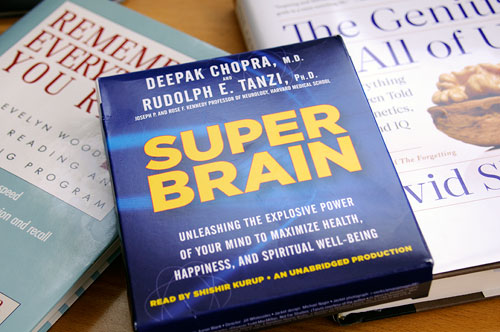
We group techniques such as speed-reading and others (memory skills, mind-mapping, etc.) as tools for "brain-hacking." We are looking to do more in this area in 2013 and will continue to use ourselves as subjects for these "experiments." Brain hacking is something anyone can do, anytime, anywhere. It is free and free of harmful side effects, unless one considers getting smarter as undesirable :-) Also, we will continue with our efforts in mastering the visual-vertical reading technique and will report back periodically on our progress. [Permalink] - Speed Reading
|





